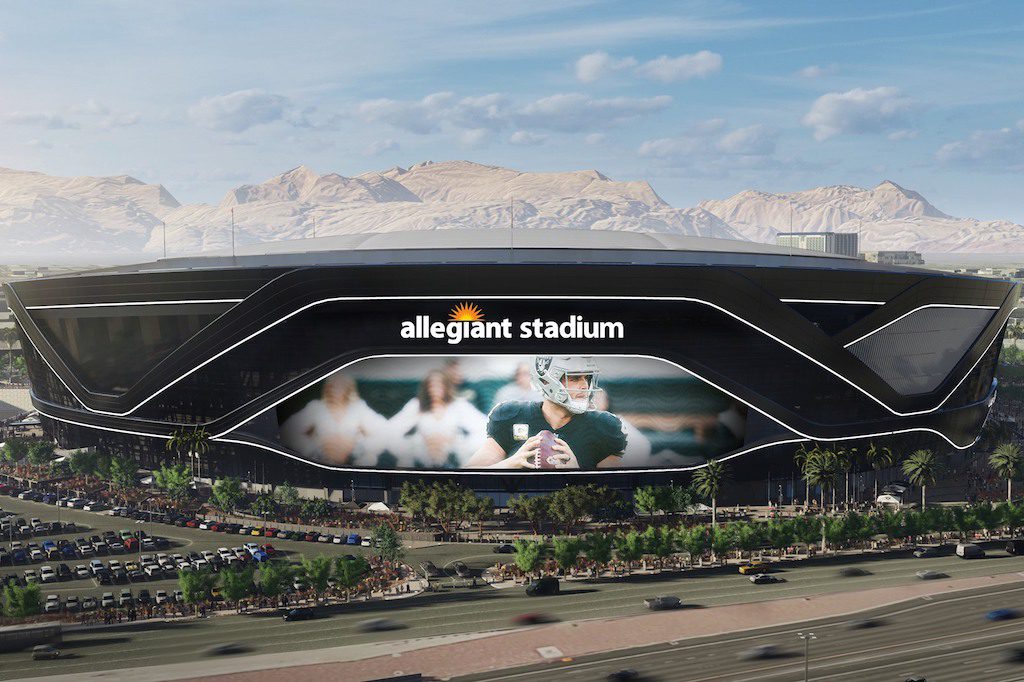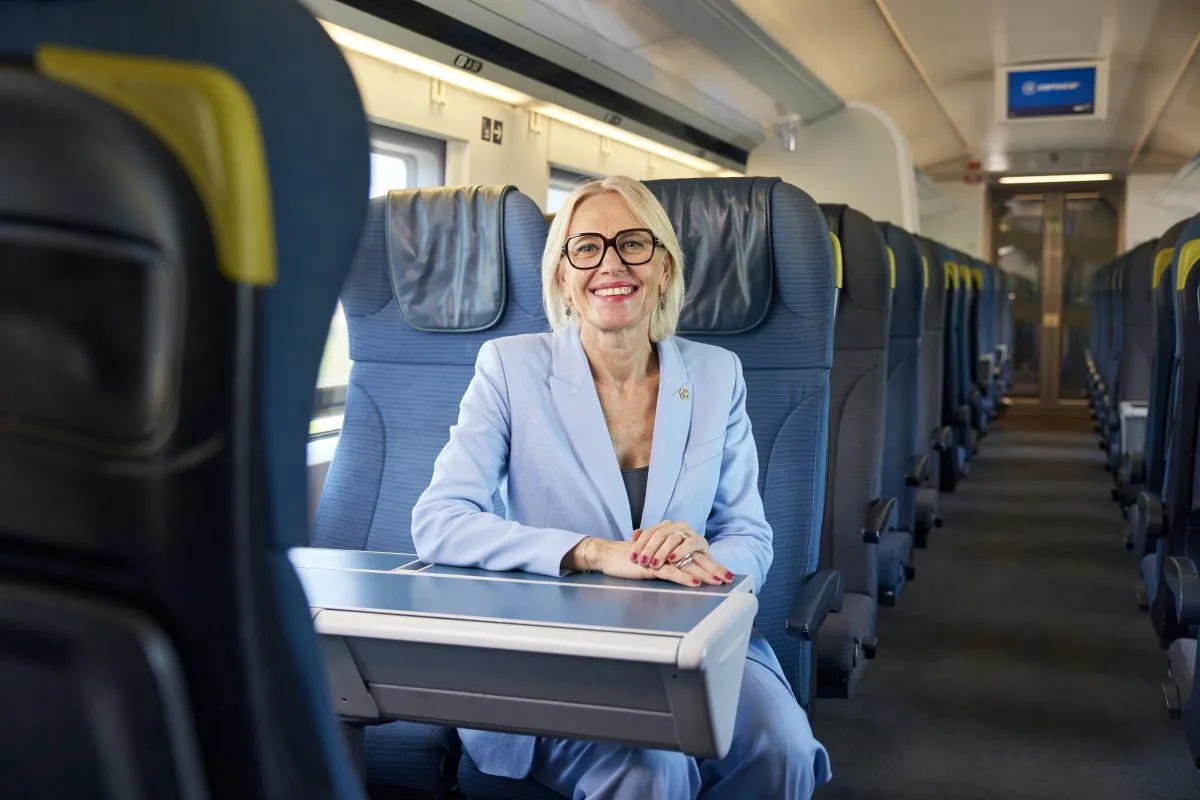Allegiant Air Is Counting On New NFL Stadium in Vegas to Boost Recognition

Skift Take
Ask customers in larger U.S. markets to name airlines, and most will list the biggies, including United Airlines, Southwest Airlines, Delta Air Lines, and American Airlines. But only a small number will mention Allegiant Air, the Las Vegas-based discounter with some of the lowest fares in North America.
"Allegiant is only going to come up 5 percent of the time, and that's a problem for getting new customers," its chief marketing officer, Scott DeAngelo, said in an interview. "They don't think of us as top of mind until I aid them."
That focus group problem never much mattered, because Allegiant didn't fly to bigger cities. It linked the smallest markets, like Minot, North Dakota, with places like Orlando and Las Vegas. When the local airport has just one airline, people tend to know it.
It’s an issue now. Allegiant wants customers in larger areas, including Pittsburgh, Cincinnati, Cleveland, and Memphis, to book its flights and packages. But if they’ve never heard of the airline, how would they find it? Allegiant doesn't sell through online travel agencies, so customers won't discover it on Orbitz or Priceline. They can only find Allegiant tickets or packages on the company's website.
Enter the National Football League.
The NFL is arguably not what it once was, with many of the league’s owners taking criticism for their politics and stance toward player safety. But it remains the most-watched sport in the United States and last year NFL games accounted for 46 of the top 50 most-watched shows on television, according to statistics cited by Allegiant.
In hopes of tapping this market, Allegiant this summer agreed to put its name on the new football stadium in Las Vegas, where the Raiders will play starting next season, after they move from Oakland. Terms were not disclosed for the 30-year-deal.
It's an interesting move for a couple of reasons. First, DeAngelo's boss, CEO Maury Gallagher, has earned a reputation over the past three decades as one of the most frugal men in aviation. And second, some larger airlines have been leaving the stadium naming business, saying it's not worth the price. American Airlines soon will drop its deal with the Miami Heat, a basketball team.
But in an interview, DeAngelo said Allegiant is in a different position than American and needs NFL’s reach for name recognition.
"With very few exceptions, almost everyone who is in naming rights is already a household name," he said. "People aren't as aware of us as they are of other brands."
Contrarian Move
Other brands have dropped arena and stadium sponsorships to spend more on targeted advertising or more sophisticated distribution strategies. But Allegiant is betting this move could help it acquire customers more cheaply than those approaches.
Allegiant estimated that if it listed on Orbitz or Priceline, it would have to pay $6 to $8 per booking, DeAngelo said. Meanwhile, for paid search, which it uses, Allegiant spends an average of abut $5 per booking, he said.
To be sure, putting a corporate name on a football stadium generally is not as effective of a conversion strategy as third-party distribution or search. Customers rarely see a corporate name on a telecast and immediately go buy a vacation.
"No one will ever look at the sign on the stadium and buy a ticket just for that," DeAngelo said. "But it absolutely increases awareness."
For Allegiant, that's key. It's usually cheaper than the competition, often significantly. But to sell tickets, DeAngelo needs to get customers "in the Allegiant store." And with Allegiant's name recognition so poor in larger markets, that's been challenging.
Allegiant is betting by putting its name on the stadium it can boost unaided awareness, so NFL fans will think of the company when they book travel. It's less about reaching Las Vegas residents, who already know the hometown airline, and as much about people watching on television elsewhere.
Ideally, DeAngelo said, they'll recognize the company from the stadium's name and perhaps pay more attention later when Allegiant tries to reach them through other means. "My email will stick out in your full email box or our TV and radio ad,” he said.
Tom O'Toole, former chief marketing officer at United Airlines, said Allegiant's move makes sense, because customers in key markets don't know its brand.
"If an airline already has virtually or literally 100 percent unaided awareness, then the value of a sports sponsorship whose primary impact is to drive unaided awareness would be questionable," said O'Toole, executive director of the Program for Data Analytics at Kellogg School of Management at Northwestern University. "If the business objective is to create unaided awareness, that may well be a sound investment.”
He added that the NFL, despite recent stumbles, remains sought over among brands seeking to raise their profiles.
“It is much reported the challenges that the NFL is facing,” O'Toole said. “The reality is that the NFL is still a very desirable sponsorship property both at the league level and at the individual stadium level. It continues to command a premium price for very practical reasons.”
Other Opportunities
There will be a couple of other opportunities to reach customers.
Allegiant plans to offer sweepstakes for NFL fans in other markets — a winner might get a chance to see the home team in Las Vegas — allowing the company to collect email addresses and phone numbers it can use later.
It also wants to get into the sports-fan charter business. The NFL is so popular that fans will travel for away games, and Allegiant sees an opportunity to fill an airplane from Cincinnati or Pittsburgh to Las Vegas, DeAngelo said. Typically, fall is a slow time for Allegiant so it has the excess capacity for fan charter flights.
“It is very natural to do it, and it helps supplement a time when we are otherwise grounding planes,” he said.
Like his boss, DeAngelo declined to say what Allegiant paid for the rights. The local newspaper, the Las Vegas-Review Journal, estimated the deal could be worth $25 to $30 million. But in a recent letter to employees, Gallagher disputed the estimate.
“While we cannot share exact numbers, know you can’t believe everything you might read about what we are spending per year,” Gallagher said. “We have been and will continue to be mindful of our number one asset, our cost structure, which has allowed us to deliver low fares to our customers the past 18 years."




